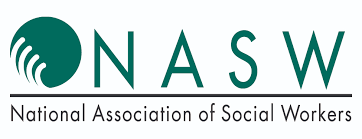|
|
80 Clinical Vignettes for Test Taking, Licensing Exam Prep, and Practical Applications
|
|
LinkedIn
E-Mail
|
PLEASE READ BEFORE PURCHASING – You are registering for credits ONLY. In order to complete this course and claim the credits, you must separately purchase and read 80 Clinical Vignettes for Test Taking, Licensing Exam Prep, and Practical Applications, by Liz B. Johnston, from NASW Press, then complete an exam. After you purchase the credits on the Social Work Online CE Institute, navigate to your My Products page and click the green Play button to purchase the publication from NASW Press. Once you have read the publication, navigate back to your My Products page and click the blue Get Certificate button to complete the exam. Please only attempt to complete the exam after you have separately purchased and read the publication.Clinical case studies are a fundamental tool for developing “practice wisdom,” the intuitive understanding of client dynamics and core issues in a case. This collection of 80 real-world-based clinical vignettes offers a diverse range of clinical counseling cases, covering all the major DSM-5-TR diagnostic categories.
Working through the clinical vignettes in this book, you will build your familiarity with the major DSM-5-TR diagnoses and the wide variety of cases that may be found in exam questions, licensing tests, or your social work practice. For each case, the answer key provides possible risk factors, diversity considerations, ethical and legal concerns, treatment issues, and possible diagnoses. Using the SHADE acronym (suicide, homicide, abuse, drugs or alcohol, eating disorder, and elder abuse) as a foundation for remembering risk factors, the dynamic answer key provides answers where appropriate and guidance to navigate the gray areas.
You will be trained to ask yourself:
- What are the significant issues present in the case?
- What are the cultural, racial, ethnic, and other diversity considerations?
- What ethical and legal issues might occur?
- What transference and countertransference issues might come up during treatment?
- What are the possible diagnoses?
- What theoretical approach should be used?
- Who is the identified patient?
- What assessment tools will you use?
- What is your treatment plan?
- What interventions would you use?
Whether you are a social work student, aspiring counselor, or practicing clinician, 80 Clinical Vignettes for Test Taking, Licensing Exam Prep, and Practical Applications will help you increase your diagnostic skills and ability to recognize risk factors in the classroom, on tests and licensing exams, and in the field.
Learning Objectives:
- Increase your knowledge base to pass the ASWB and other licensing exams.
- Analyze written client case vignettes.
- Understand and apply the SHADE mnemonic to determine risk factors in client vignettes.
- Distinguish between legal and ethical issues in client vignettes to choose appropriate responses.
- Describe the mandated reporter requirements for danger to self or others, child abuse, elder abuse, and domestic violence.
- Understand DSM-5-TR diagnostic codes and apply these codes to client vignettes.
| Price (Credits ONLY, Book Must Be Purchased Separately) | Early Registration | Standard |
|---|
| Non-Member | N/A | $35.00 | | Member | N/A | $27.00 |
|
Customers Who Bought This Item Also Bought
(Self Study)
Immigration & Health Care: What Social Workers Need to Know in the Current Environment
(Self Study)
Integrated Primary Care / Behavioral Healthcare Certificate Program
(Self Study)
Engaging and Working with the Hard-to-Reach Client
(Self Study)
Rethinking Child Welfare
(Self Study)
The Art of Diagnosis
(Self Study)
Treating Perinatal Distress and Supporting the Motherhood Journey
(Self Study)
Documentation Skills to Improve Outcomes for Social Workers
(External Course)
Reproductive Decision Making: Acting to Help Clients
(Self Study)
Psychological First Aid
(CEtoGo)
Emotional Intelligence in Social Work: Strengthening Professional Practice
(Self Study)
#3094 – RECORDED WORKSHOP - Mental Health and Nutrition: Beating the Blues with the Greens
(External Course)
Burnout and Self-Care in Social Work: A Guidebook for Students and Those in Mental Health and Related Professions
|
|

 Adding Registration, Please wait...
Adding Registration, Please wait...









